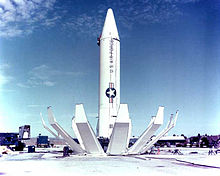
The 458th Air Expeditionary Group is a provisional United States Air Force unit assigned to United States Air Forces in Europe to activate or inactivate as needed. The most recent known activation of the unit was at Ramstein Air Base, Germany in 2011.

The 451st Air Expeditionary Group was a provisional United States Air Force USAFCENT unit. It was assigned to Kandahar Airfield and is also the host unit at Kandahar. It reported to the 455th Air Expeditionary Wing at Bagram Air Base.

The 741st Missile Squadron is a United States Air Force unit stationed at Minot Air Force Base, North Dakota. The squadron is equipped with the LGM-30G Minuteman III intercontinental ballistic missile, with a mission of nuclear deterrence.

The 740th Missile Squadron is a United States Air Force unit stationed at Minot Air Force Base, North Dakota. The squadron is equipped with the LGM-30G Minuteman III intercontinental ballistic missile, with a mission of nuclear deterrence.

The 453rd Bombardment Group is an inactive United States Air Force unit that was first organized in June 1943, during World War II, as a Consolidated B-24 Liberator heavy bomber group. After training in the United States, it deployed to England in December 1943, and, starting in February 1944, participated in the strategic bombing campaign against Germany with Eighth Air Force. Its 733d Bombardment Squadron completed 82 consecutive missions without a loss, a record for Eighth Air Force bomber units. James Stewart, of film fame, was group operations officer from 31 March to 1 July 1944. The group was programmed for redeployment to the Pacific and returned to the United States in May 1945 for training, however the Japanese surrender cancelled these plans and the group was inactivated in September 1945.

The 494th Air Expeditionary Group is a provisional United States Air Force group assigned to Air Mobility Command (AMC) to activate or inactivate as needed. The group was activated in the events surrounding Operation Iraqi Freedom, the 2003 United States invasion of Iraq. Now-Lieutenant General Stayce D. Harris is listed by the USAF as commanding the 494th AEG at Moron Air Base, Spain, from July to October 2003. In addition, a patch published at USAF Patches.com implies that the group was active in Spain during "Iraqi Freedom."

The 742d Missile Squadron is a United States Air Force unit stationed at Minot Air Force Base, North Dakota. The squadron is equipped with the LGM-30G Minuteman III intercontinental ballistic missile, with a mission of nuclear deterrence.

The 672d Technical Training Squadron is an inactive United States Air Force unit. Its last assignment was with the 705th Strategic Missile Wing at RAF Lakenheath, England, where it was inactivated on 1 October 1959.
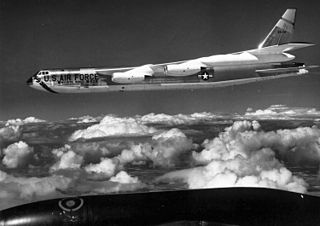
The 864th Bombardment Squadron is an inactive United States Air Force unit. Its last assignment was with the 494th Bombardment Wing at Sheppard Air Force Base, Texas, where it flew Boeing B-52 Stratofortresses under Strategic Air Command. It was inactivated on 2 April 1966.

The 866th Bombardment Squadron is an inactive United States Air Force unit. Its last assignment was as the 866th Technical Training Squadron with the 1st Missile Division at Redstone Arsenal, Alabama, where it trained for overseas deployment the SM-78 Jupiter. It was inactivated on 25 May 1962.

The 867th Attack Squadron is an active United States Air Force unit. It was reactivated at Creech Air Force Base, Nevada, on 10 September 2012 as a remotely piloted aircraft squadron.
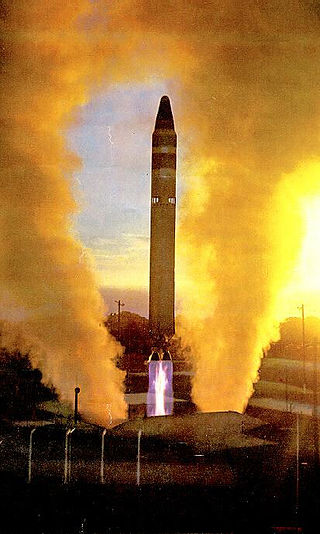
The 373d Strategic Missile Squadron is an inactive United States Air Force unit that was last assigned to the 308th Strategic Missile Wing at Little Rock Air Force Base, Arkansas. The 373rd was equipped with the LGM-25C Titan II Intercontinental ballistic missile in 1962, with a mission of nuclear deterrence. The squadron was inactivated for the last time as part of the phaseout of the Titan II ICBM on 18 August 1987.

The 848th Strategic Missile Squadron is an inactive United States Air Force unit. It was last assigned to the 703d Strategic Missile Wing at Lowry Air Force Base, Colorado, where it was inactivated on 1 July 1961. The squadron was first activated in 1943 as the 848th Bombardment Squadron during World War II. After training in the United States, it deployed to the European Theater of Operations and participated in the strategic bombing campaign against Germany. Following V-E Day, the squadron returned to the United States, where it was inactivated in November 1945. It was activated as an intercontinental ballistic missile squadron in 1960.

The 849th Strategic Missile Squadron is an inactive United States Air Force unit. It was last assigned to the 703d Strategic Missile Wing at Lowry Air Force Base, Colorado, where it was inactivated on 1 July 1961 and its assets transferred to another squadron that was simultaneously activated.

The 725th Strategic Missile Squadron is an inactive United States Air Force unit. It was last assigned to the 451st Strategic Missile Wing at Lowry Air Force Base, Colorado, where it was inactivated on 25 June 1965.

The 724th Strategic Missile Squadron is an inactive United States Air Force unit. It was last assigned to the 451st Strategic Missile Wing at Lowry Air Force Base, Colorado, where it was inactivated on 25 June 1965.
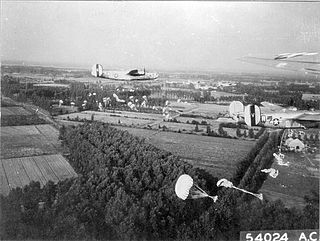
The 506th Bombardment Squadron is an inactive United States Air Force unit. It was last assigned to the 44th Bombardment Wing at Chennault Air Force Base, Louisiana, where it was inactivated on 15 June 1960.

The 547th Bombardment Squadron is an inactive United States Air Force unit. It was first activated during World War II as a Boeing B-17 Flying Fortress unit. After training in the United States, it deployed to the European Theater of Operations, where it participated in the strategic bombing campaign against Germany, earning two Distinguished Unit Citations. Following V-E Day, the squadron moved to France and was inactivated there in early 1946.

The 425th Bombardment Squadron is an inactive United States Air Force unit. Its last assignment was with 308th Bombardment Wing at Plattsburgh Air Force Base, New York, where it was inactivated in 1961.
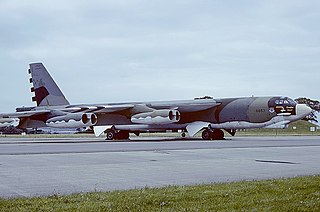
The 644th Bomb Squadron is an inactive United States Air Force unit. It was last assigned to the 410th Bombardment Wing at K. I. Sawyer Air Force Base, Michigan, where it was inactivated on 21 November 1994.


